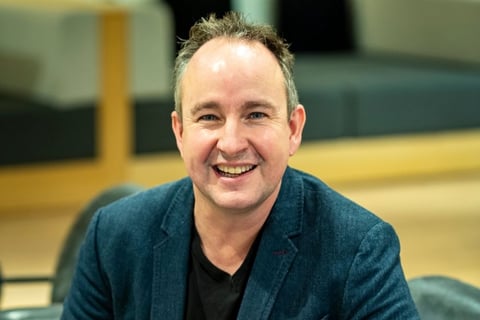

The ambition at the heart of the geocoding software services company Addresscloud puts it in very good company among innovative businesses looking to do something differently. The firm was born from CEO and founder Mark Varley’s conviction that there had to be a better way to think about using geographic data to allow insurers to make rapid and accurate ceding decisions at risk level.
Read more: Flood Re taps Addresscloud tech
In his two decades in the industry, Varley (pictured) has held a variety of roles including serving at Accenture and RSA, and it was in his time as solution architect with RSA that he first became involved in utilising geographic data and embedding it into the quote and bind process. RSA was ahead of its time in using address-level information rather than post-code level information, he said, but the Achilles heel of the solution was matching solid match rates for UK addresses. And so Addresscloud was created.
“When we started in 2015, the specific problem we were trying to solve was bringing in an address and matching it to a set of geographic coordinates,” he said. “[…] Doing that in the insurance context was actually quite challenging at the time, and a real problem faced by us at RSA. When you or I are insuring our property, we can put in our postcode and select it from a list – it’s quite simple. But when it’s a commercial property or an address that has been captured by a broker, it might not have gone through that level of cleansing and standardisation.”
Essentially what Addresscloud has done is take the textual input of an address, and match it against data from a range of sources – among them, Ordnance Survey, Royal Mail, Eircode in the Republic of Ireland, and the Land and Property Services in Northern Ireland. Over time, he said, this has allowed the organisation to build up its own bespoke algorithm able to navigate all the weird and wonderful mistakes people make when inputting their address. That geocoding piece was the focus for its first few years.
Addresscloud had its first real break when RSA went out to market to procure a new solution, Varley said. It joined forces with another company, put together a proposition and won the contract over major, well-established corporations who had been providing solutions to the sector for many years. It was the first in a line of significant contracts secured by the services provider.
“After three years just looking at geocoding… the natural progression was saying, ‘well, we can tell you where these places are. Now let’s tell you what we know about them’. We’re in quite a privileged position in that we get data from the Ordnance Survey so we know where every single property is in the UK. What we can then do is match that data against maps and other information to try and determine what information we can tell an insurer from that.”
This information set is informed partially by Addresscloud’s own data and the organisation works with established data partners to supply the rest. What the team looks to do differently from other market players, he said, is focus on the speed and technical delivery of its data. Often this data will be used in an aggregator-type scenario where an insurer needs to return a price in a matter of seconds so the speed of delivery is crucial.
“What we do a bit differently is that we do all the work in advance,” he said. “We basically process every property in the country in advance and every time we get a new address, we take that and then we add that into our cache. That allows us to do two things, which is, one, return a response very quickly so we can meet those SLAs. And the other thing is so we can be a bit more creative around the kind of analysis that we can do.”
Read more: Flood insurance directory in the works
Taking flood risk, for example, Varley said, as floods are especially pertinent at the moment, historically people were doing everything by postcode level which can see a huge variation, particularly in a rural location. And so, more of the market has moved to the Addresscloud-approach of using an address-specific data entry. But being flexible and proactive is just as important as being innovative for the sake of innovation, he said, and that means understanding that, in some cases, that approach also might not be the right one.
“For a commercial insurance address, this might be too specific,” he said. “Often an address might be back on the front of a building site. For example on an industrial estate, there might be a gatehouse that the address points to but actually, the risk is all out the back in a big warehouse. So, what we’re doing at the moment is using building outline data and land parcel ownership data to be a little bit smarter [when assessing commercial risks].”
There are big plans in Addresscloud’s future, Varley said, and though it’s too early to talk about them yet he’s excited about what the future has to hold as some of the large organisations the provider’s working with are now sharing access to their books to provide more data. In addition, his and his team’s focus is on building out Addresscloud’s exposure management capability to provide a clean user experience that promotes accessibility and usability.
“We’ve got some really innovative data partners that we’re bringing in,” he said. “We’re working really closely with them as well as around our own data modelling work. And there are also those new customers we’re bringing on board - we learn from every customer we bring on board, so we’re really excited to be working with those as well.”
